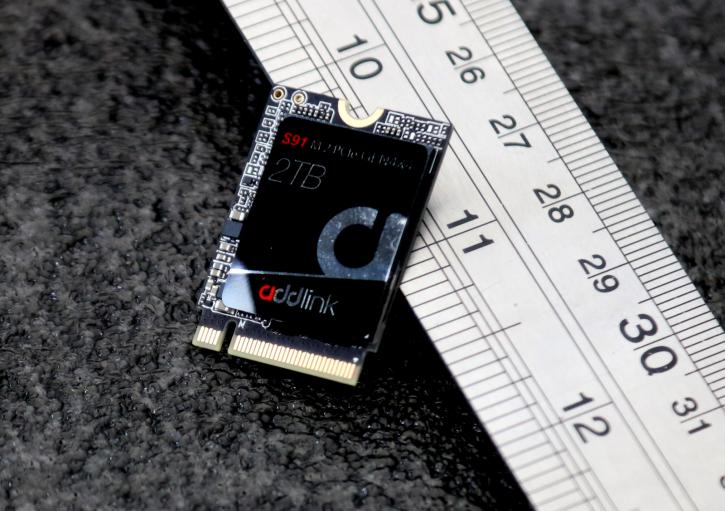Introduction
Addlink S91 NVMe SSD Review
Compact M.2 2230 PCIe Gen4x4 SSD
Addlink, a Taiwanese hardware manufacturer established in 2014, specializes in producing a wide range of flash storage products. Their product portfolio includes USB sticks, SD memory cards, and SSDs. In this review, we will focus on the Addlink S91, a highly compact M.2 NVMe drive in the 2230 form factor, measuring only 30 mm in length. With its small dimensions, it serves as an excellent storage upgrade option for the Valve Steam Deck. Apart from the Valve Steam Deck, the Addlink S91 SSD is compatible with the ASUS ROG Ally game console and various Microsoft Surface Pro devices. It can also be utilized in cases where an M.2 2242 PCIe drive is required. While M.2 2230 drives have been available in the market for some time, the Addlink S91 stands out with its rare 2TB capacity within this form factor. The S91 SSD is designed for small mobile devices such as ultrabooks, laptops, tablets, and gaming devices. Its small form factor, M.2 2230 PCIe Gen4x4, enables efficient storage integration in compact devices. With a PCIe Gen4x4 interface, the S91 SSD delivers impressive performance. It offers sequential read speeds of up to 5,000MB/s, making it compatible with the latest Intel and AMD platforms while still adhering to PCIe Gen3 standards. To fit into small form factor mobile devices, all components of the S91 2230 SSD must be situated on one side, requiring a height of 2.15mm.
Internally, the Addlink S91 utilizes a Phison E21 controller, a well-established controller seen in many other drives. The NAND flash technology employed is 176-layer QLC from Micron. Due to space limitations, a separate DRAM cache chip is not installed. The drive connects to the system via the PCI-Express 4.0 interface. Pricing for the Addlink S91 is as follows: 512GB ($53), 1TB ($80), and 2TB ($190). The endurance ratings for these models are set at 300 TBW, 250 TBW, and 450 TBW, respectively. It's important to note that the 512GB version uses Kioxia BiCS5 TLC flash, explaining the higher endurance compared to the Micron QLC flash used in other capacities.


